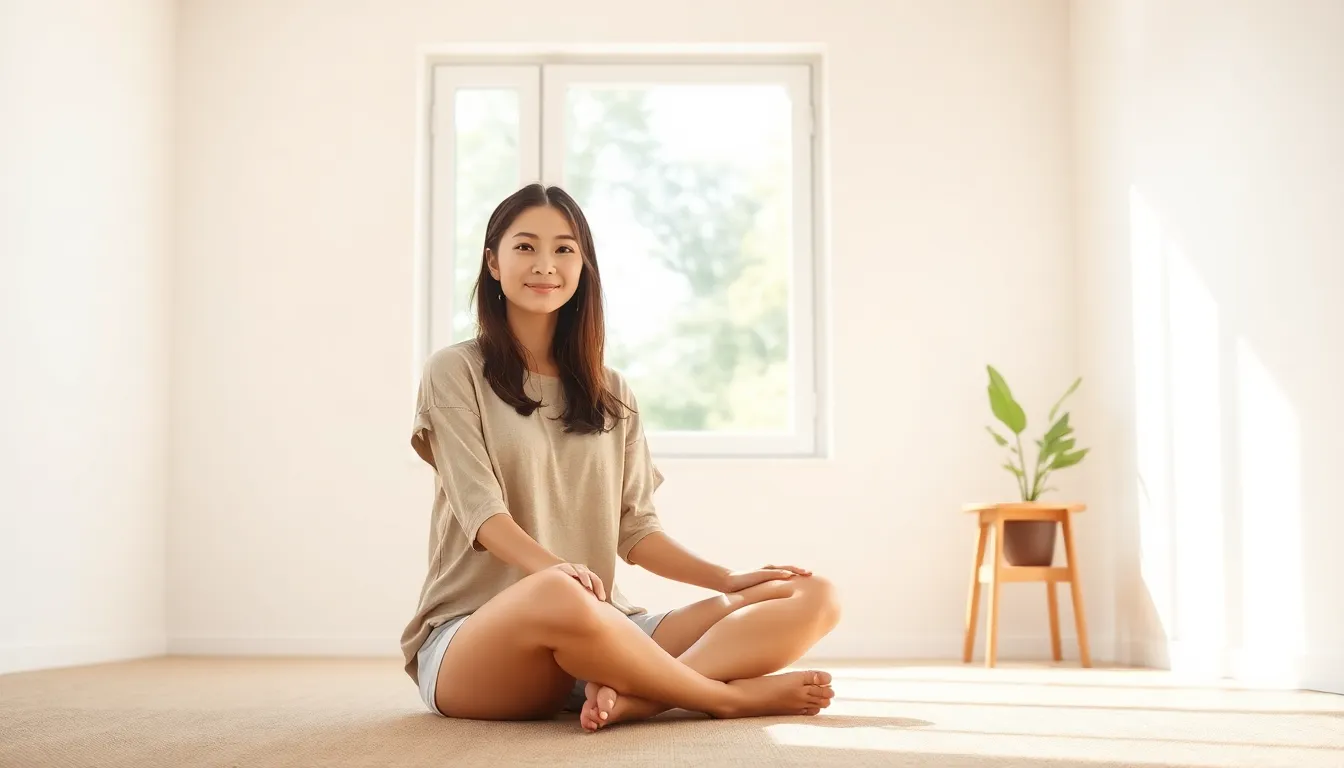In a world overflowing with stuff, it’s easy to feel like a contestant on a hoarding reality show. But what if less truly is more? Enter minimalist living—a lifestyle that promises not just a cleaner home but a clearer mind. Imagine trading clutter for calm and chaos for clarity. Sounds appealing, right?
Table of Contents
ToggleWhat Is Minimalist Living?
Minimalist living emphasizes simplicity and intentionality. This lifestyle encourages individuals to focus on what truly matters, uncluttering both physical and mental spaces.
Definition and Philosophy
Minimalist living promotes the idea of reducing belongings to enhance one’s life experiences. The philosophy centers on making conscious choices regarding possessions, leading to a more meaningful existence. By prioritizing quality over quantity, individuals often find greater satisfaction in their daily lives. This approach extends beyond material items to include activities and relationships, fostering a focus on emotional and spiritual well-being.
Benefits of Minimalist Living
Adopting a minimalist lifestyle offers numerous advantages. First, it often leads to reduced stress and anxiety due to a decluttered environment. Second, individuals may experience increased financial freedom by purchasing fewer items and focusing on investments that matter. Third, minimalist living promotes sustainability, as it encourages thoughtful consumption and waste reduction. Many also report enhanced focus and creativity, as removing distractions creates space for personal growth. Overall, minimalism provides a pathway to a more intentional, fulfilling life.
Getting Started with Minimalism

Starting the journey into minimalism requires self-reflection and intention. Individuals must evaluate their current lifestyle and identify areas for improvement.
Assessing Your Current Lifestyle
Begin by examining belongings and their purpose. Determine which items add value and which contribute to clutter. Consider keeping only what provides utility or joy. Evaluate space utilization, identifying areas that feel overwhelming. Create a list of possessions that seem unnecessary. This assessment fosters awareness about consumer habits and encourages mindful decisions moving forward.
Setting Minimalist Goals
Identify specific, achievable goals to guide the minimalist journey. Goals might include decluttering a room each week or reducing wardrobe items by 50%. Prioritize which areas in life need simplification and why. Short-term milestones can provide motivation and encouragement. Establish a timeline for achieving these goals, ensuring progress feels manageable. Regularly review and adjust goals as needed to maintain focus and commitment.
Decluttering Your Space
Decluttering enhances the minimalist lifestyle by promoting a clean environment and mental clarity. Focus on simplifying spaces to foster intentional living.
Room by Room Approach
Tackle one room at a time to prevent feeling overwhelmed. Start with areas that cause the most stress, like the kitchen or bedroom. Work systematically through items, examining each for utility and emotional value. For example, clear out the pantry by removing expired items first. Move to clothes next; consider donating items worn infrequently. This method creates visible progress and motivates continued efforts.
Tips for Effective Decluttering
Set specific goals for each decluttering session. Dedicate a time frame, like 30 minutes, to maintain focus. Use boxes labeled “keep,” “donate,” and “discard” for organization. Assess emotional attachments critically; if an item doesn’t spark joy, it might be time to part ways. Stay accountable by sharing progress with friends or family. Regularly revisiting this process prevents future buildup and maintains a minimalist space.
Embracing Minimalism in Daily Life
Minimalism in daily life fosters simplicity and intentionality across various aspects. This approach not only declutters physical spaces but also enriches overall well-being.
Simplifying Your Wardrobe
Streamlined wardrobes enhance daily routines. Prioritizing versatile clothing items allows for effortless outfit choices. Selecting quality over quantity cultivates personal style while reducing decision fatigue. Following a capsule wardrobe strategy can further simplify clothing decisions. Focusing on a limited color palette creates cohesive looks. Regularly assessing clothing for relevance encourages mindful spending. Donating or recycling unworn items promotes sustainability. Engaging in a seasonal review keeps wardrobes functional and fresh.
Minimalist Cooking and Meal Planning
Minimalist cooking emphasizes simplicity and efficiency. Planning meals weekly can minimize food waste and streamline grocery shopping. Focusing on fresh, whole ingredients enhances nutrition while reducing clutter in the kitchen. Selecting a few go-to recipes helps with quick preparation and minimizes stress. Utilizing batch cooking can provide healthy options for busy days. Incorporating a system for organizing pantry items ensures easy access to essentials. Avoiding excessive kitchen gadgets promotes a more functional space. Regularly reviewing pantry and fridge contents prevents overcrowding and maintains freshness.
Maintaining a Minimalist Lifestyle
Maintaining a minimalist lifestyle involves creating sustainable habits and overcoming challenges that may arise along the way.
Creating Sustainable Habits
Establishing routines that support minimalism is crucial for long-term success. Commit to decluttering regularly by scheduling sessions every month. Focus on specific areas that tend to accumulate clutter, like drawers or closets. Gradually reassess belongings to ensure they align with personal values and goals. Engage with community resources, such as local swap events or donation programs, to cultivate responsible consumption. Prioritize quality over quantity in purchases, investing in durable items that serve multiple purposes. Incorporate mindfulness into daily life, making thoughtful choices about what to bring into the home.
Overcoming Challenges
Confronting obstacles is part of the minimalist journey. Understand that attachment to belongings can be emotional; recognizing this connection can help ease the decluttering process. Encourage accountability by sharing goals with friends or family, fostering support systems. Resist the temptation to revert to old habits by continually reassessing motivations and benefits of minimalism. Acknowledge that setbacks occur, but persistence is key to moving forward. Maintain flexibility, adjusting goals as needed while ensuring the journey remains manageable. Celebrate wins, no matter how small, to reinforce commitment to a minimalist lifestyle.
Embracing minimalist living offers a transformative approach to life that prioritizes clarity and intentionality. By simplifying surroundings and focusing on what truly matters, individuals can experience reduced stress and enhanced well-being. The journey involves self-reflection and mindful decision-making, paving the way for a more fulfilling existence.
Regular decluttering and establishing sustainable habits are key to maintaining this lifestyle. With commitment and flexibility, anyone can overcome challenges and celebrate progress. Minimalism isn’t just about reducing belongings; it’s about enriching life experiences and fostering a deeper connection with oneself and the world.








